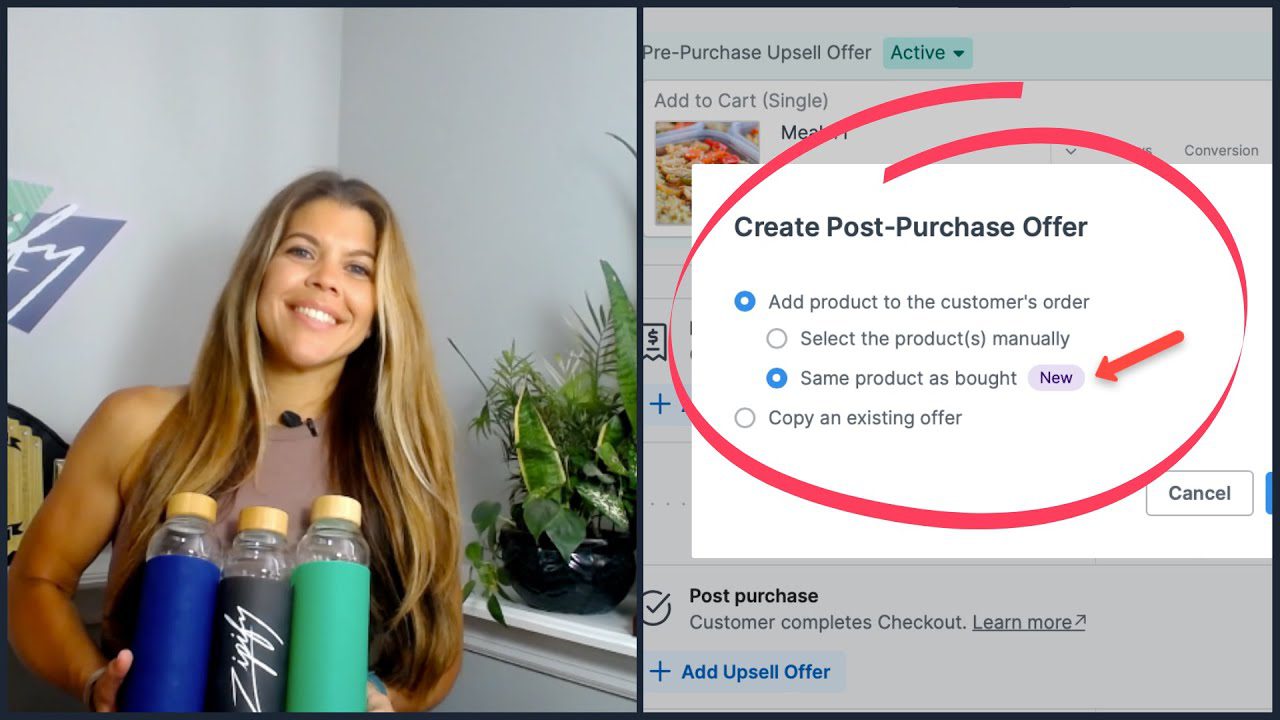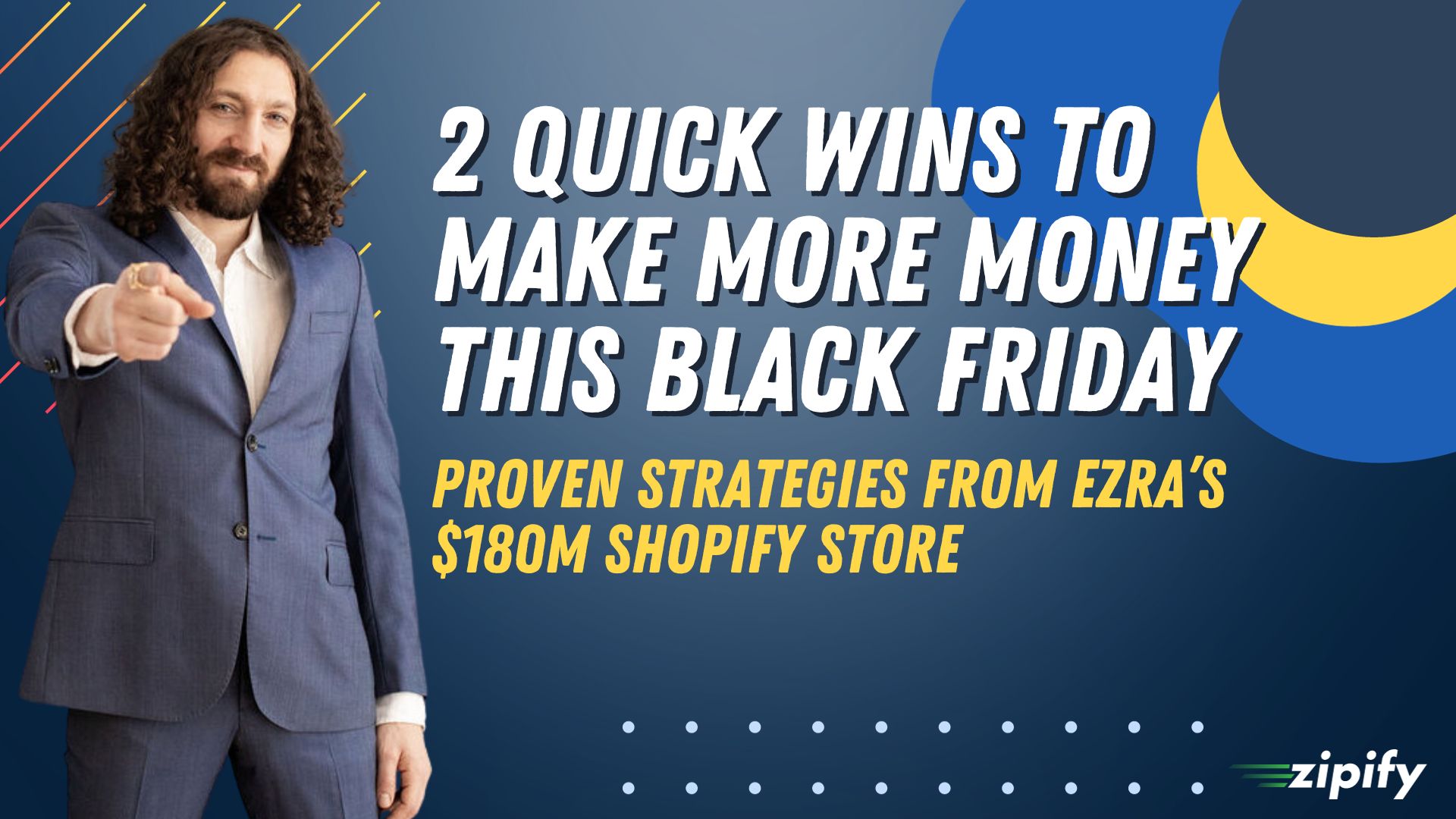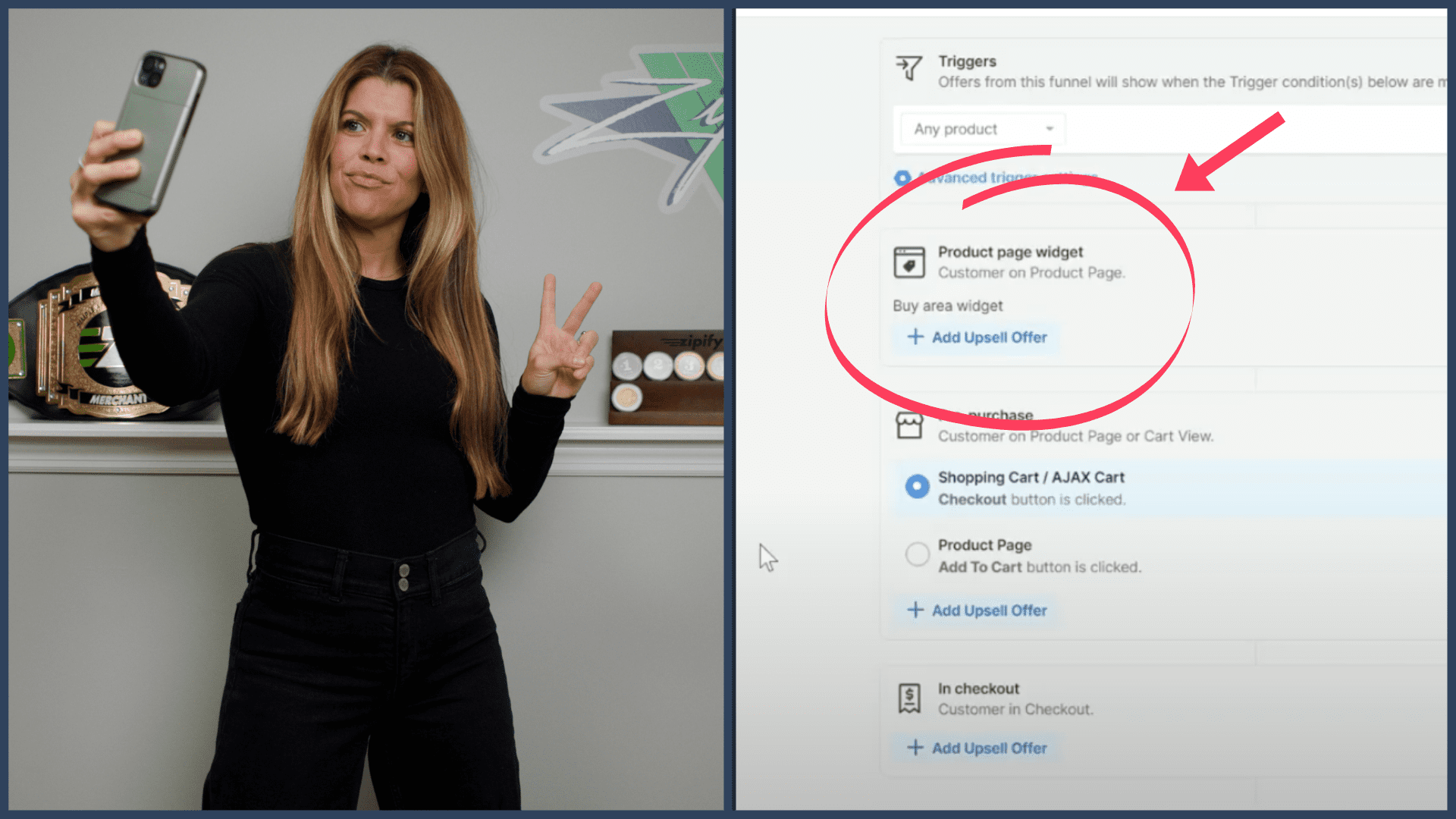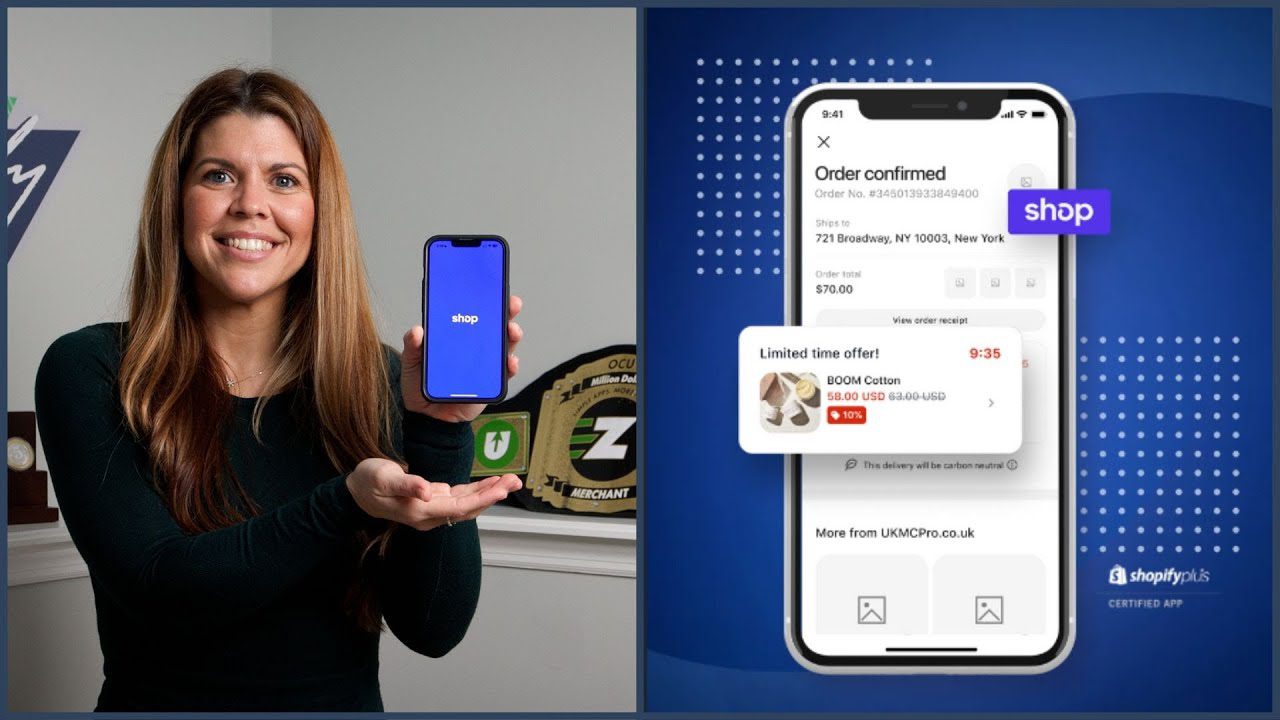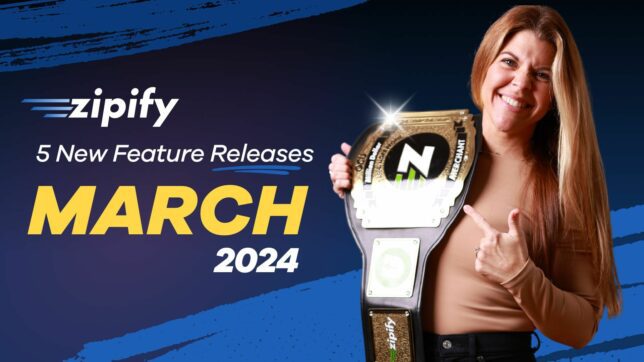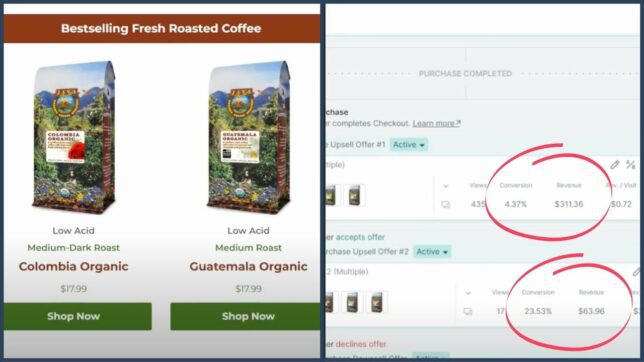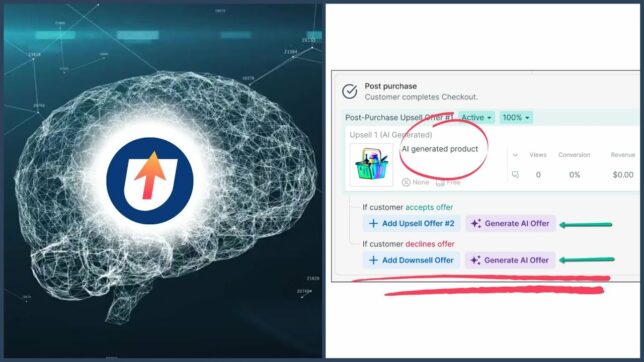Hey, Ezra Firestone here!
Welcome to the first video in a 2-part presentation on what I learned from generating $100 million in sales for a single brand over the last 4 years.
In Part 1 I focus on big-picture concepts: I break down 12 things you should at the very least have on your radar if you want to scale to 8 figures.
Then, in Part 2, I focus very specifically on how you can optimize your ecommerce store so that you can turn these 12 big-picture concepts into real sales that will grow your business.
A LITTLE ABOUT ME…
I own and operate one of the world’s largest Shopify stores — we’ve done almost $100 million in revenue over the last 4.5 years.

I also build teams. I have 3 companies: Smart Marketer, a marketing education company that sells courses; Zipify Apps, a Shopify application company; and BOOM! By Cindy Joseph, which is my ecommerce company, and the brand I’ll mostly be focusing on the most in this presentation.
When you combine those 3 companies, I’ve actually generated about $140 million in revenue since 2016.
People ask me, “Hey man, you used to work a 9–5 job… You started with nothing… Now you have 3 companies, 2 of them 7 figures a year and one of them 8 figures. How did you do that?“
Well, in this 2-part presentation I’m going to share exactly how I did that. Specifically, I’m going to show you what I learned from $27.7 million in ad spend to generate $98 million in revenue with a single brand.
Now let’s dive into the 12 keys to building an 8-figure business.
1. PRODUCT LINE EXPANSION
One of the most important things I’ve learned in my 15+ years as a business owner is this: the game is won or lost on the backend.
It’s not just about selling that one product, your flagship product. It’s about repeat purchases and average order value.
If you’re going to scale to 8 figures then you need to increase your repeat purchase rate, and the best way to do that is to expand your product line. Or as I like to say: go all in on product line expansion.
You want about 30–40% of your revenue to come from repeat customers — whether that means you sell subscriptions, offer upsells and cross-sells, or whatever — and I’m going to show you strategies you can use to do that.
Here’s a look at my revenue broken down by first-time customers vs. return customers:

Of the $91 million accounted for here, $40.5 million (or about 43% of my revenue) came from returning customers, while the other $51 million came from first-time customers.
I have two front-end products that I use for customer acquisition — these are the products that almost all of my first-time customers come to me for. Meanwhile, my other 13 products are sold mostly on the backend as upsells and cross-sells.
That’s why you need to expand your product line: so you have more products to sell to your existing customers.
2. GO ALL IN ON EMAIL
One way to increase your repeat customer rate is to go all in on email.
Email is still the #1 communication channel between brands and subscribers (the second being ads).
This year, 34% of my brand’s revenue came from sales generated via email marketing, and most brands that make it to 8 figures are generally in that 30–40% range.
What does it look like to go “all in” on email? Take me as an example: I send content emails. I send promotional emails. I use GIF animations in my emails. And every 6 weeks I run a sale campaign.
Here’s my promo calendar from last year:
Ezra’s promotional calendar showing product launches and holiday sales.

I don’t care if you only have 50 people on your email list, you need to send out a piece of content at least once a month (ideally once a week) that’s educational and valuable — it could even be curated content.
Then every 6 weeks you need to run a sale campaign where you offer a discount. No matter the size of you business, you will generate more revenue if you do this.
Brands in the 8-figure range probably send 3–4x as many email as you do, and in my experience, you can’t send too many as long as it’s good content. When my brand started sending more emails, we didn’t notice our spam rate or our unsubscribe rate go up at all (but our revenue sure did!).
If you want to learn more about the email marketing strategies I use in my Shopify store, check out this free training:
Leveraging Email for Sales and Profit
3. MINE YOUR CUSTOMERS FOR USER-GENERATED CONTENT
“User-generated content” is fancy term for pictures, selfies, videos, reviews, testimonials, and other content created by your customers.
And I use this stuff everywhere — in my ads, emails, landing pages, even on my cart page! I use it anywhere and everywhere I can put it.
So how do you get UGC from your customers? One of our methods is to incentivize them with a $10 gift certificate to our store. In our post-purchase email sequence, we tell them, “Hey, send us an image or a video talking about how much you love your product and our brand, and we’ll send you a gift certificate.”
Then we use those videos in our ads, emails and landing pages:

This type of content is our main marketing material. It’s cheap to create and there’s nothing more authentic.
Another inexpensive way to create great UGC is through a brand ambassador program. Check out this article I wrote about how we used an ambassador program to create one of our most successful Facebook ad campaigns ever:
My #1 Facebook Ad Formula: How I Generated $2.8 Million with 1 Cold Traffic Campaign
4. UNDERSTAND PRODUCT VS. STORY
When it comes to marketing, most people only understand product. Product is “what am I selling and what are the benefits of it?”
But if you want to get to 8 figures then you also have to understand story, which is WHO you are selling to and WHY they’re interested.
Who’s your audience? What’s motivating them? Once you understand that, you can speak to those people via the stories you tell in your content. This is how you build true community, and definitely what brings people back for repeat purchases.
5. MOBILE VS. DESKTOP
If you want to truly optimize your digital sales process, then you essentially need two versions of your website — a mobile / tablet version and a desktop version.
That’s because these users are completely different: they’re viewing on different browsers and for different lengths of time; your mobile site needs to have less content on it so it can load faster; the list goes on.
If you’re not optimizing for desktop in one way and mobile in another way, you’re missing out on higher conversions rates.
I talk about this a lot on zipify.com (my Shopify software company), and in Part 2 of this presentation I’m going to show you a strategy we used to increase our mobile conversion rate significantly.
6. RATIO OF REVENUE TO AD SPEND
In 2018 I generated $25.1 million in revenue from $6.2 million in ad spend, and from my point of view, I set my budget exactly right.
15–30% of your topline revenue should be reinvested back into paid amplification.

So for example: if you make $1 million per year in revenue, then $150,000–$300,000 should be invested the next year into paid ads to grow the brand. (Remember, $1 million in revenue is not the same as $1 million in profit.)
In my case, 24.7% of my total revenue was spent on amplification, and that was right where I wanted it to be.
This is the fuel that moves the vehicle of your business foreward.
You have to set your budget and spend it. It’s like a diet or a workout program. You have to do it every day.
THE HALO EFFECT
Consistent reinvestment in paid amplification won’t just help you this year; it will help you for years to come.
There’s this phenomenon that happens when brands commit to paid ads — it’s called the Year-Over-Year Halo Effect.
In year 1 and 2 of your ads strategy, your brand generates pixeled audiences, email leads and customers (among other assets). I like to think of this as watering the seeds of your brand. Then in years 3, 4 and 5 these assets start to produce greater and greater returns. I think of this as seeds beginning to sprout and trees bearing fruit.
That’s why years 3–5 are when people tend to hit 7 and 8 figures, and why I advocate for consistent investment every day. Set your budget and spend it.
YOU GET OUT WHAT YOU PUT IN
One more thought on the importance of investing in your business: you get out what you put it!
Most people are always asking, “What can I take out of my business? How can I get paid?”
and that’s the wrong attitude.
The right attitude is to ask the questions, “What can I put in? What can I invest? Who can I get to help me? How much more money can I get to invest? How can I not take anything out and let the snowball grow for a couple years before I start pulling from the brand?”
These are the questions to ask if you want to build a big brand.
7. HAVE A GREAT PROMISE (AND PRODUCT)
Personally, I really like to sell premium, high-price point products. It gives me a higher average order value and more profit per order that I can then use to grow my brand.
So it’s no surprise that most 8-figure brands sell premium products. Some examples are Quip, Allbirds, Tushy, Purple, and M.Gemi.
Still, only one of these products is new to the marketplace (Allbirds is sort of the first wool runner). All these other products — tooth brushes, leather shoes, bidets, etc. — aren’t new. They’re just the best in their marketplace.
It’s important to understand that the brand that usually wins in a marketplace doesn’t necessarily need to have the best product — they just need to have the best promise.
The product doesn’t have to be unique or revolutionary or do something other products aren’t as long as they’re making a promise that other products aren’t.
You make this promise with the images, videos and copy you use on your product page, and in Part 2 of this presentation, I’m going to show you the conversion assets you should use on your product pages to do that.
Of course, then the product has to live up to the promise. If you don’t have a good product and your customers don’t like what you’re giving them, then the best marketing in the world won’t save you.
8. PROMOTE YOUR PRODUCTS (USE THESE HACKS)
As I mentioned in item #2 on this list, it’s really important to run sale campaigns and launch new products as often as possible…
But in 2020, we came up with a lot of creative ways to promote our offers that don’t include creating new products or putting existing products on sale.
Some examples of these hacks are: reformulating existing products, new componentry, new sizes, “Back in Stock” emails, bundles and kits.

These types of promotions work extremely well, and they allow us to supplement our promo calendar without doing much extra work.
9. TOPLINE VIDEO ADS
You must get good at creating topline video ads. I know a lot of people have been harping on about this over the past couple years (myself included), so I won’t go too deep on the topic here. Still, you need to do it.
My brand has been working on this a lot in 2020. We’re continually improving the ads in our awareness pillar using customer videos that we cut together into different lengths and formats.
The better our topline ads works, the more our retargeting bucket gets filled and the more our loyalty bucket gets filled.
10. EMAIL LEADS
This is an add-on to #2. You must be generating email leads.
Every 8-figure brand is not only going out and buying customers via direct response sales funnels, they’re also going out and buying email leads to grow their list.
One of the ways we do this is with a giveaway promotion we run once a month:

Customers mature at different speeds. Sure, some people might convert within the 28-day window of your Facebook pixel, but others might need to be on your email list for a few months before they become a customer.
We spend 10% of our budget buying email leads, and you should be doing the same if you want to grow your brand as fast as you can.
As I mentioned earlier, you can learn more of my email marketing strategies in this free training.
11. SOCIAL CONTENT
After you focus on your direct response sales funnel and email sales funnel, you should focus on your social content.
You need to be creating engagement content like articles and videos, and curating additional content that’s relevant to your audience. I have a customer in my mastermind who sells knives, and he goes out and gets videos of Emeril Lagasse cutting onions and says, “Hey look at this cool video… Oh and by the way you can do that with our knives.”
So as you can see don’t have to create the content yourself.
Half the revenue we generate from email comes from sales, but the other half comes just from content that we send to our list.
Customers engage with our content, end up on our site, and go buy something without our even making an offer!
Want to learn how to use my content marketing system to create a company that is profitable and sustainable because it truly adds value to the marketplace? Check out this free training:
How to Build a REAL Ecommerce Brand Using Facebook, Instagram, Google & YouTube.
12. PRE-SELL ARTICLES
Okay, this last one is for you advanced folks out there.
I’ve had amazing success throughout my career with advertorial marketing. This is basically driving traffic to an article that begins as a piece of content but then transitions to a pitch for our products and leads into our sales process.
These articles can be used as topline awareness, auto-responders, retargeting, direct-to-list content, in sale events— you name it.
For the first few years of my business, I sent all my traffic through one of these pre-sell articles which would then link to my website. I’ve literally generated tens of millions in revenue with this strategy.
KEEP AN EYE ON YOUR EMAIL FOR PART 2…
Those were the 12 key things you need to focus on to reach 8 figures, but none of them will matter if people don’t click that “BUY” button when they go to your store.
That’s why, in Part 2, I’m going to show you how to optimize your store so you can turn these 12 strategies into real sales that will grow your business.








